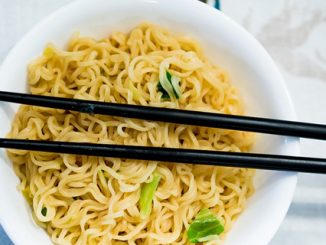Seaweed has been a part of our diet for a long time; the earliest reference I can find is from Japan where forms of algae were found with shellfish and bones dating back to 10500BC.
 Seaweed was also commonly eaten around 2500BC along the coast of Peru and in central Africa a species of Spirulina was harvested from Lake Chad and used as a sauce. In China from around 200BC to 200AD laws were established where seaweed harvested for food was allowed to be used to pay court tax.
Seaweed was also commonly eaten around 2500BC along the coast of Peru and in central Africa a species of Spirulina was harvested from Lake Chad and used as a sauce. In China from around 200BC to 200AD laws were established where seaweed harvested for food was allowed to be used to pay court tax.
More recently, when I was cooking in London, I was shown a traditional Welsh dish that comprised of laverbread (a thick green seaweed found clinging to rocks) cooked with oysters and blue cheese, as well as a sausage consisting of laverbread, bacon and mushrooms that dated back to the 18h century. Considering seaweed’s long history around the world, it’s strange that most of us only see it now at Japanese restaurants.
The flavor of seaweed is also often mistaken as fishy. Sure, some have a very distinct seaweed flavor but they do not all taste the same. Seaweeds are prized for their textures as much as their flavor and they have varied gelling qualities – the most common in domestic kitchens being agar agar or carrageenan.
Speaking generically about the health benefits of seaweed there is much to say too; they are packed with vitamins and minerals, high in protein and omega 3 and promote good gut health with lots of prebiotic and probiotic properties.
In Australia 85 percent of the population lives within 50km of the coast and we have an insatiable appetite for seafood, yet sadly our seaweed consumption is limited to a Nori sheet wrapped around rice at the local sushi train. It is also unfortunate that the Nori you are eating is imported.
My desire to change this and work with seaweeds led me to form PhycoFood Co. with Dr. Pia Wienberg. We aim to educate and showcase the most delicious, nutritious and interesting seaweeds we can find. Included in our range is one special seaweed called Australian Ulva, which is not only the first cultivated species of seaweed grown in Australia but is also indigenous and unique to Australia. As we learn, gather and accumulate, we will sell through our website – check out www.phycofood.co for more information.



Leave a Reply
You must be logged in to post a comment.